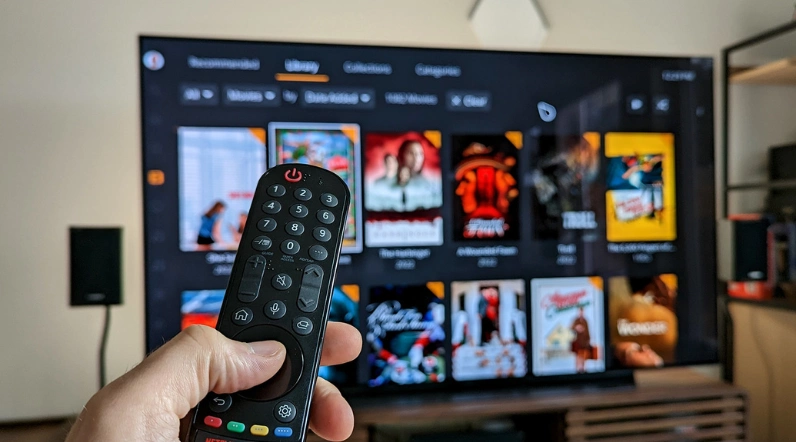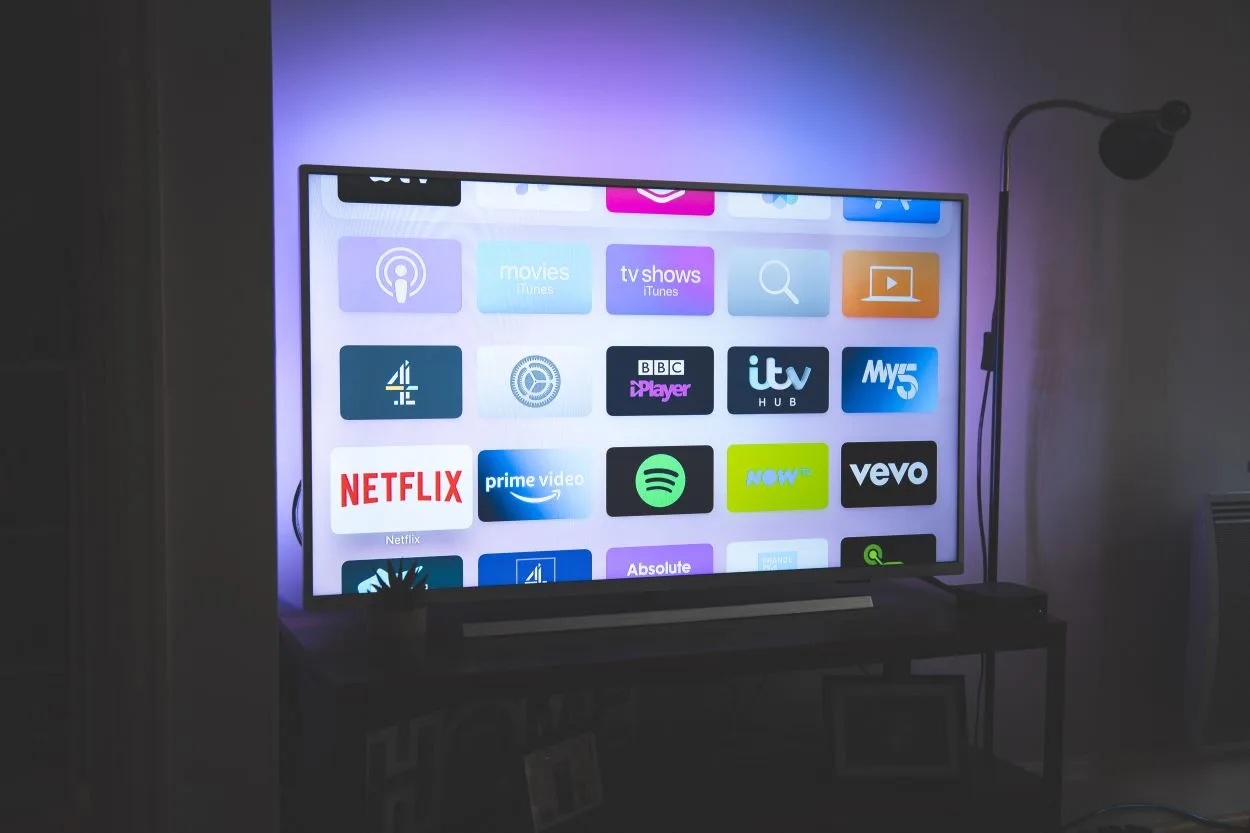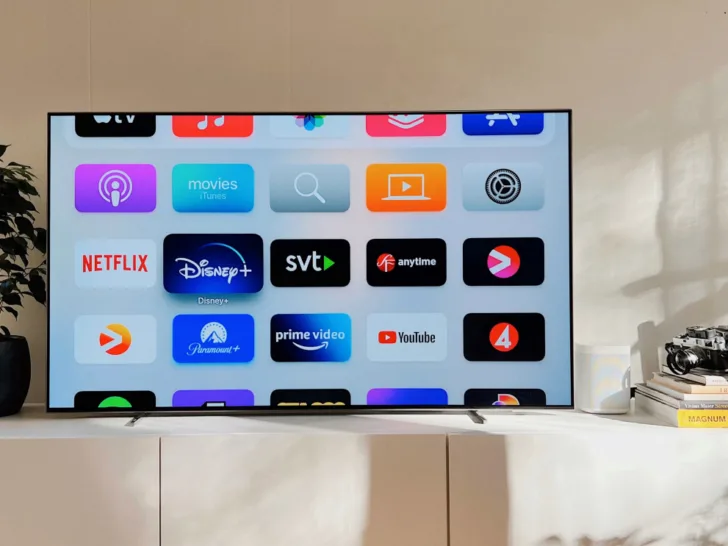Is your frustration level rising because your remote control refuses to change channels while the volume mysteriously works just fine? Don’t despair! This is a common problem with a surprisingly simple solution in most cases.
There are a few easy things to fix your remote that won’t change channels. Check the batteries and make sure they are fresh and inserted correctly. Point the remote directly at the sensor on your TV and remove any obstacles. You can also try resetting the remote by removing the batteries or consult your TV’s manual for specific troubleshooting steps.
Before you resign yourself to flipping through channels manually (or worse, getting up and down to change them on the TV!), take a deep breath and follow these easy troubleshooting steps. We’ll get you back to browsing channels and enjoying your TV in no time.

Furthermore, we unveil the inner workings of remote control hardware. Individual buttons, often overlooked, hold secrets to the remote’s responsiveness.
Cleaning the remote from accumulated dust and debris, testing buttons for functionality, and repairing damaged components breathe new life into our trusty companions.
| What to Know | Brief Information |
|---|---|
| Common Issues With Remote Controls | Methodically check each button for responsiveness and functionality. Disassemble the remote, clean buttons, and sensors with isopropyl alcohol or soapy water, and ensure proper drying before reassembling. Inspect the circuit board for visible damage, attempt button repair, or seek professional repair/replacement. |
| Possible Reasons the Remote Won’t Change Channels | Your remote might not change the channel, which can be a software or hardware failure. Further, problems can also occur as some remote hardware fails, such as a battery. Lastly, the interception of other devices can also be a reason your remote does not change channels. |
| Diagnosing and Fixing Device-Specific Issues | Troubleshooting the TV: Verify TV settings and input selection, and update TV firmware if required. Troubleshooting the cable/satellite box: Ensure cable box connectivity and reset the box to resolve minor glitches. |
| Dealing with Remote Control Hardware Problems | Methodically check each button for responsiveness and functionality. Disassemble the remote, clean buttons, and sensors with isopropyl alcohol or soapy water, and ensure proper drying before reassembling. Inspect the circuit board for visible damage, attempt button repair, or seek professional repair/replacement if necessary. |
Common Issues With Remote Controls: The Common Woes of the Handheld Device
While remote controls are incredibly convenient, they can occasionally exhibit problems that disrupt our seamless user experience.
Non-Responsive Remote
Sometimes, the remote may not respond to button presses, causing frustration. This issue can arise due to depleted batteries, a blocked IR sensor, or interference from other electronic devices emitting infrared signals.
Limited Range and Line-of-Sight Issues
Their line-of-sight requirement limits IR remotes’ functionality, necessitating a direct path between the remote and the device’s sensor.
Obstructions or long distances can hinder their effectiveness. Though offering longer ranges and more robust performance, RF remotes may still experience interference from other RF devices.
Button Malfunctions
Over time, buttons on the remote can wear out or become sticky, affecting responsiveness and accuracy.
In conclusion, remote control technology has come a long way, revolutionizing how we interact with electronic devices.
Understanding the principles behind IR and RF remotes enables us to make informed choices based on our specific needs.
By troubleshooting common issues, we can ensure uninterrupted control over our favorite devices, enhancing our modern lifestyle with seamless wireless convenience.

Possible Reasons the Remote Won’t Change Channels: Unraveling the Enigma
Device-Specific Issues (TV, Cable Box, etc.)
- Compatibility Quandary Remote controls are designed to communicate with specific devices using unique codes. If the remote is incompatible with the TV or cable box, it will fail to change channels. This issue may arise when using a universal or new remote with an older device.
- Signal Receiving Woes The functionality of a remote relies on the device’s infrared (IR) or radio frequency (RF) sensor, which receives the remote’s signals. If the sensor is obstructed, dirty, or malfunctioning, it won’t respond to the remote’s commands, resulting in channel change failures.
Software or Firmware Problems
- Glitchy Software Modern devices, including TVs and cable boxes, rely on complex software to operate smoothly. Software bugs or glitches can cause the channel-changing feature to malfunction. A system update or reset may be required to resolve the issue.
- Outdated Firmware acts as the device’s internal software, governing its functions. If the device’s firmware is outdated, it may not support certain remote control commands, leading to channel change problems. Updating the firmware can often resolve this issue.
Remote Control Hardware Problems
- Battery Woes The life force of a remote control lies within its batteries. Low battery power can weaken the remote’s signal strength, leading to intermittent or non-responsive channel changes. Replacing the batteries with fresh ones is a simple fix for this problem.
- Button Malfunctions Frequent use can wear down remote control buttons, reducing responsiveness or failure to change channels. This can occur due to dust accumulation or physical damage. Cleaning the remote or seeking professional repair can help restore button functionality.
Interference from Other Devices
- Signal Clash Remote controls communicate via infrared or radio signals, and sometimes, other devices emit similar signals that interfere with the remote’s commands. This can happen if multiple remotes or devices are used nearby without proper shielding or frequency management.
- Radio Frequency Interference (RFI) RFI occurs when external devices emit radio signals overlapping with the remote’s frequency range, disrupting communication with the target device. This is more common with RF remotes that operate on a wider frequency spectrum.
Diagnosing and Fixing Device-Specific Issues: Unlocking TV and Cable Box Mysteries
Troubleshooting the TV
Checking TV Settings and Input Selection
When the remote control fails to change channels, the first suspect is often the TV itself. Begin by verifying that the TV is set to the correct input source.
Modern TVs have multiple input options, such as HDMI, AV, or cable. If the TV is set to the wrong input, the remote won’t be able to change channels.
Use the TV’s remote or buttons on the TV itself to cycle through the input options and ensure it matches the cable or satellite box’s connection.
Updating TV Firmware
Outdated TV firmware can lead to various performance issues, including problems with remote control functionality.
Manufacturers frequently release firmware updates to address bugs and improve device compatibility.
To update the TV firmware, access the TV’s menu and look for the “System” or “Software Update” option. Follow the on-screen instructions to download and install the latest firmware version, which may resolve the channel-changing issue.
Troubleshooting the Cable/Satellite Box
Verifying Cable Box Connectivity
If the TV settings are correct, the next step is to inspect the cable or satellite box. Ensure the box is connected properly to the TV using the appropriate cables (HDMI, component, or coaxial).
Check for loose or damaged cables and connectors that might impede signal transmission.
A loose connection can disrupt communication between the remote control and the cable box, causing the channel-changing problem.
Resetting the Cable Box
Resetting the cable or satellite box can often resolve minor software glitches affecting functionality. To perform a reset, locate the power or reset button on the cable box (refer to the box’s manual if necessary).
Alternatively, you can unplug the cable box from the power source, wait for about 30 seconds, and then plug it back in.
Give the box a few minutes to boot up and reconnect to the TV. This simple troubleshooting step may restore the remote’s ability to change channels effectively.

Dealing with Remote Control Hardware Problems: Breathing New Life into Your Remote
Testing Individual Remote Buttons
The culprit may lie within the hardware when faced with a remote control that won’t change channels.
Individual buttons on the remote can wear out or become unresponsive over time, hindering its functionality. To diagnose this issue, conduct a comprehensive button test:
- Methodical Testing: Press each button on the remote individually, paying close attention to their responsiveness. Note any buttons that feel sticky, require excessive force, or fail to produce any response. An unresponsive button may indicate debris accumulation or internal damage.
- Multifunction Buttons For remotes with multifunction buttons (e.g., volume and channel up/down), ensure all the functions work as expected. Malfunctions in multifunction buttons may indicate more complex hardware issues.

Cleaning the Remote Control
Over time, remote controls can accumulate dirt, dust, and even accidental spills, leading to sticky buttons and erratic behavior. Cleaning the remote can often breathe new life into it:
- Gentle Disassembly: Carefully open the remote control’s casing, following the manufacturer’s guidelines or using a suitable tool like a screwdriver. Avoid using excessive force to prevent damage.
- Cleaning the Buttons and Casing Using a soft, lint-free cloth or cotton swab, clean the buttons and surrounding areas with isopropyl alcohol. This removes sticky residues and disinfects the surface. A mild soap and water mixture can be used for more stubborn grime. Ensure the remote is thoroughly dry before reassembling it.
- Remote Sensors Clean the infrared or RF sensor on the remote’s front side with a soft cloth. Dust or smudges on the sensor can hinder communication with the devices.
Repairing or Replacing Damaged Components
If testing reveals a faulty button or a damaged internal component, repair or replacement might be necessary:
- Button Repair For sticky or unresponsive buttons, attempt to remove any visible debris causing the issue gently. If the problem persists, consider replacing the individual or the entire button panel.
- Circuit Board Inspection Inspect the circuit board for any visible damage, such as burnt spots, broken traces, or loose connections. If you have soldering skills and the necessary tools, you may attempt to repair any identified issues.
- Professional Repair or Replacement If the hardware problem is beyond your expertise, consider seeking assistance from a professional repair service or contacting the remote’s manufacturer for repair or replacement options.
Did You know
- The invention of the TV remote control led to a more passive form of television viewing, with less physical interaction with the set.
- Universal remotes, introduced in the 1980s, offered a solution to the growing clutter of brand-specific remotes.
- Voice-activated remotes and smartphone apps are changing how we interact with TVs, offering a more hands-free experience.
Frequently Asked Questions (FAQs)
Q: Can I use my smartphone as a remote control for older devices?
Ans: Yes, in many cases, you can transform your smartphone into a remote control for older devices.
Several third-party apps and manufacturers’ official apps offer compatibility with a wide range of electronic devices.
Ensure that your smartphone and the targeted device support the same communication technology, such as infrared or Wi-Fi, to establish a seamless connection.
Q: Are voice-controlled remotes capable of understanding different accents?
Ans: Voice-controlled remotes have made significant strides in understanding various accents and dialects.
However, the accuracy of voice recognition can still vary based on the sophistication of the underlying natural language processing technology.
You should check the language support and user feedback for the specific voice-controlled remote you’re considering to ensure it aligns with your linguistic needs.
Q: Will a universal remote work with all my devices, including newer models?
Ans: Universal remotes are designed to be compatible with many devices, including older models.
However, their compatibility with newer and less common devices may vary.
Before purchasing a universal remote, it’s prudent to check the manufacturer’s device compatibility list to ensure it supports your specific devices.
Conclusion
- Common issues with remote controls include non-responsiveness due to depleted batteries, blocked IR sensors, or interference from other devices. IR remotes can have limited range and line-of-sight problems, while button malfunctions may arise over time. Understanding these challenges empowers us to troubleshoot and enjoy seamless control over our electronic devices for a convenient modern lifestyle.
- The remote not changing channels may be due to device-specific issues, signal-receiving problems, software or firmware glitches, remote control hardware issues, or interference from other devices. Compatibility, sensor obstructions, software bugs, outdated firmware, low batteries, button malfunctions, and signal clashes can all contribute to the enigmatic problem. Troubleshooting and resolving these issues can restore seamless channel-changing functionality.
- To diagnose and fix device-specific issues with the TV and cable/satellite box, ensure the TV is set to the correct input and update its firmware. In contrast, verify the cable/satellite box’s connectivity and try resetting it.
- To deal with remote control hardware problems, perform a methodical button test, clean the remote, and inspect for any visible damage on the circuit board. Repair or replacement of individual components may be necessary, and seeking professional assistance is an option for complex issues.
- With these insights, you can elevate your entertainment experience and enjoy seamless control over your devices for a truly immersive digital journey.

